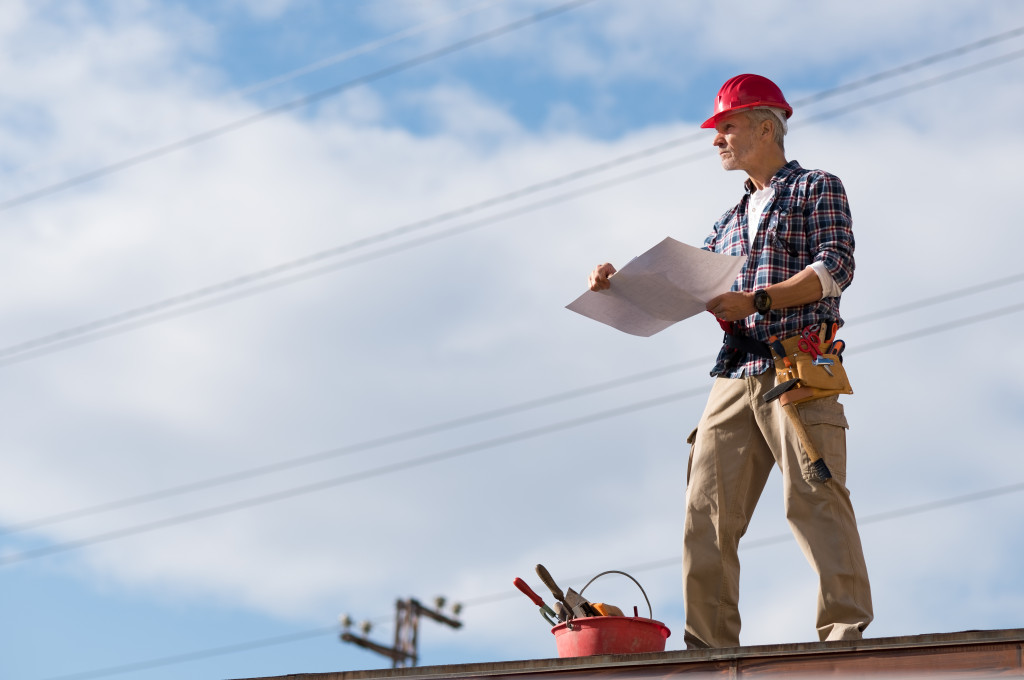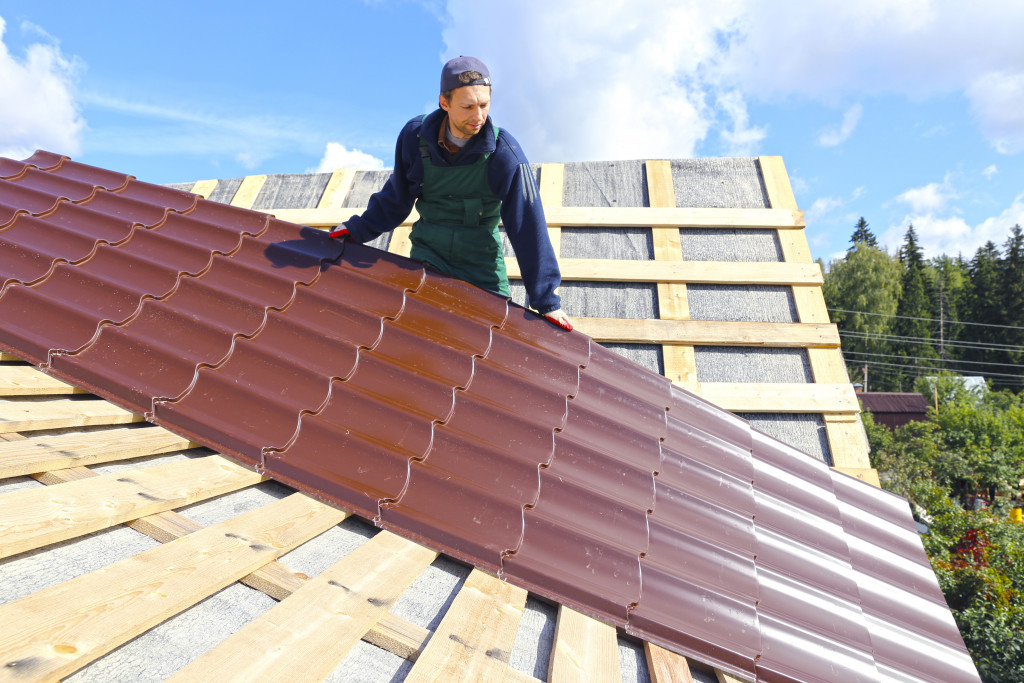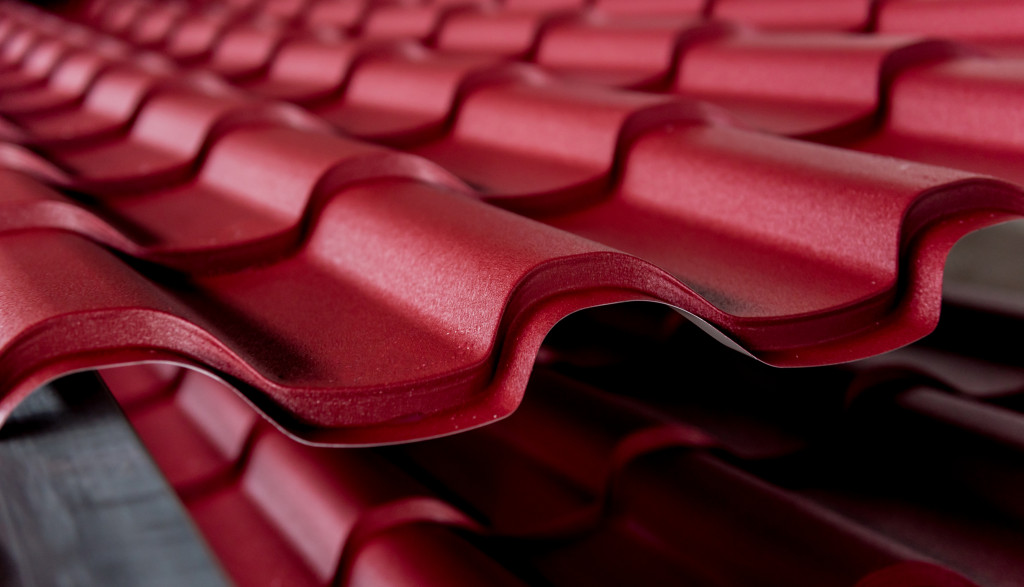- Metal roofs are durable, long-lasting, and energy-efficient but are not entirely maintenance-free.
- Regular roof inspections are crucial for the early detection and treatment of issues like corrosion, loose fasteners, and water damage.
- Homeowner maintenance should include regular roof cleaning, applying protective coatings, and ensuring gutters are clean and functional.
- Hiring professional metal roof repair services is recommended for complex issues or repairs.
Residential metal roofing has gained significant popularity in recent years. Homeowners increasingly opt for metal roofs over traditional materials like asphalt shingles for their durability, longevity, and energy efficiency. Metal roofs last 40 to 70 years, significantly longer than an asphalt roof’s average lifespan, typically 12 to 20 years. Moreover, metal roofs are resistant to cracking, shrinking, and eroding, making them an excellent choice for areas with harsh weather conditions.
From an energy efficiency standpoint, metal roofs reflect solar radiant heat, reducing cooling costs by 10% to 25% on average. According to the Metal Roofing Alliance, metal roofing has grown in the US market share from 3.7% in 1998 to 14% last year, demonstrating a steady increase in homeowner preference for this durable and cost-effective roofing option.
However, it does not mean that metal roofs are entirely maintenance-free. While they may be more durable and longer lasting than asphalt shingles, homeowners should take certain precautions. Here are a few steps to ensure that your metal roof stays in top condition:
Perform Roof Inspection Regularly

Regular inspection is crucial for maintaining the longevity and performance of your metal roof. Over time, external factors like weather conditions, falling debris, or simple wear and tear can lead to minor damages. These minor issues can escalate into significant problems if left unchecked, resulting in costly repairs or premature roof replacement. Periodic inspections allow homeowners to identify and address these issues early, ensuring the metal roof remains in optimal condition for as long as possible. Here are a few things homeowners should watch out for:
Check for Signs of Corrosion
Metal roofs are highly corrosion-resistant but aren’t entirely immune. Monitor for signs of rust or corrosion, particularly in regions with high humidity or saltwater exposure. If detected early, these can be treated to prevent further damage.
Inspect for Loose or Missing Fasteners
Fasteners play a crucial role in securing the roof panels. Over time, they can become loose or fall out due to weather conditions or natural wear and tear. Regular inspections can help identify and replace missing or loose fasteners, ensuring the roof remains secure.
Look for Damage from Falling Objects
Depending on your location, your metal roof may be exposed to falling debris from trees, hail, or even wind-blown objects. Over time, this can lead to dents or punctures in the metal, which could lead to leaks. Regular inspections can help spot and repair this damage early.
Monitor for Leaks or Water Damage
While metal roofs are highly water-resistant, no roof is entirely waterproof. Regularly inspect your attic and interior ceilings for signs of water damage. If detected early, leaks can be sealed and repaired before they lead to more significant damage like mold or rot.
Learn Metal Roofing Maintenance
Understanding and implementing essential metal roofing maintenance is vital for homeowners, extending the roof’s lifespan and optimizing its performance. This proactive approach not only helps prevent minor issues from escalating into costly damages but also saves you from unexpected interruptions in the comfort and safety of your home. Here are a few tasks that homeowners can manage:
Clean Your Roof Regularly
A clean roof enhances the aesthetic appeal of your home and contributes to the longevity of the metal roof. Debris, like leaves, branches, and dirt, can trap moisture against the metal, increasing the risk of corrosion. Regular cleaning can help prevent this. Use a low-pressure wash to remove any debris and dirt from the roof gently.
Apply Protective Coatings
Protective coatings can significantly enhance the corrosion resistance of your metal roof, especially in areas with harsh weather conditions. Regularly applying a high-quality protective layer according to the manufacturer’s instructions can help maintain the roof’s structural integrity and appearance.
Regular Gutter Maintenance
Ensuring your gutters are clean and functional is essential, as clogged gutters can accumulate water, damaging the roof and your home’s overall structure. Regularly clean out your gutters, removing any debris and checking for signs of damage or wear.
Trim Overhanging Branches
Trees with branches hanging over the roof can threaten your metal roofing. They can scratch the roof, causing damage, and in severe weather conditions, break off, causing significant damage. Regularly trim any overhanging branches to prevent them from causing potential harm.
Hire Metal Roof Repair Services

Unfortunately, there will be a few complicated or dangerous tasks that homeowners cannot manage independently. If you detect any signs of damage or wear, hire professional metal roof repair services to undertake the necessary repairs and maintenance.
Professional technicians specializing in metal roof repair have the tools and experience to address minor issues like corrosion before they become costly problems. They can also replace missing or loose fasteners, apply protective coatings, and analyze your roof’s condition in detail to identify any other issues.
Final Thoughts
Metal roofs can significantly increase the value of your home, offering long-lasting performance and cost savings. However, their durability doesn’t mean that they are entirely maintenance-free. Taking proactive steps like regular inspections and applying protective coatings can ensure your metal roof stays in excellent condition for many years.

